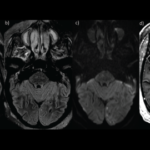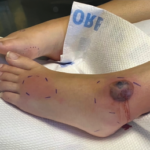A prospective observational study by Syversen et al. found that patients with immune-mediated inflammatory diseases (IMID) had an attenuated serologic response to the standard two-dose vaccine regimen but a third dose was safe and effective.


A prospective observational study by Syversen et al. found that patients with immune-mediated inflammatory diseases (IMID) had an attenuated serologic response to the standard two-dose vaccine regimen but a third dose was safe and effective.

Glucocorticoids remain a prominent part of care for many patients with SLE but can have toxic side effects; this EULAR 2022 session discussed one institution’s approach to lower the dosage.

Research has demonstrated that deucravacitinib is significantly more efficacious than placebo for achieving minimal disease activity in patients with active PsA after 16 weeks of treatment.

In a study from Ramanan et al., baricitinib proved safe and effective for reducing the time to flare and frequency of flare in patients aged 2–18 years with juvenile idiopathic arthritis.

This EULAR 2022 session emphasized the importance of recognizing the axial manifestations of psoriatic arthritis and treating these symptoms accordingly.

A study from Haibel et al. in patients with chronic knee arthritis found intra-articular morphine did not lead to a significant, short-term reduction in pain compared with placebo and proved inferior to treatment with intra-articular triamcinolone.

Ian D. Cooley, MD, & Eli M. Miloslavsky, MD |
Teaching junior learners, such as medical students and residents, is increasingly important in rheumatology. Given the anticipated shortage of rheumatologists, attracting more trainees to our field and enhancing knowledge of the rheumatic diseases among physicians in other fields are critical to meeting the needs of our patients.1,2 In addition, clinical reasoning is a vital skill…

Dana DiRenzo, MD, MHS |
The prescription is a powerful tool for a physician. As rheumatologists, we prescribe many things—drugs, physical therapy, durable medical equipment—but what about stress reduction? We are very specific about times of day to take medications and in what manner. Patients ask: With or without food? With other medications? Before or after other prescribed medications? If…

Fazila Aseem, MD, MPH, Alexander D. Jeffs, MD, Enid Y. Sun, MD, MPH, Randaline R. Barnett, MD, Courtney Blodgett, AG-ACNP, Winnie Lau, MD, Casey Olm-Shipman, MD, MS, Matthew F. Sharrock, MD, Rhonda Cadena, MD, Yueh. Z. Lee, MD, PhD, Alfredo C. Rivadeneira, MD, & Clio A. Rubinos, MD, MS |
Scleromyxedema is a primary cutaneous mucinosis characterized by a diffuse and generalized papular skin eruption of mucinous deposits throughout the upper dermis. In addition to dermatologic manifestations, scleromyxedema may involve the cardiopulmonary, gastrointestinal, renal and nervous systems. Dermato-neuro syndrome (DNS) is a rare, severe neurologic complication of scleromyxedema.1,2 The pathogenesis of DNS is unknown, but…

Ryan Guerrettaz, MD, Angelo Ciliberti, MD, Rochella Ostrowski, MD, Elise Wolff, DO, Nadia Qureshi, MD, & Ramzan Shahid, MD |
Acute febrile neutrophilic dermatosis, or Sweet syndrome, is an inflammatory disease that classically presents with fever, leukocytosis and tender, erythematous plaques characterized by neutrophilic infiltrates on biopsy. Sweet syndrome has been reported in association with several autoimmune diseases, including inflammatory bowel disease, systemic lupus erythematous, rheumatoid arthritis and sarcoidosis.1 Here, we discuss a case of…